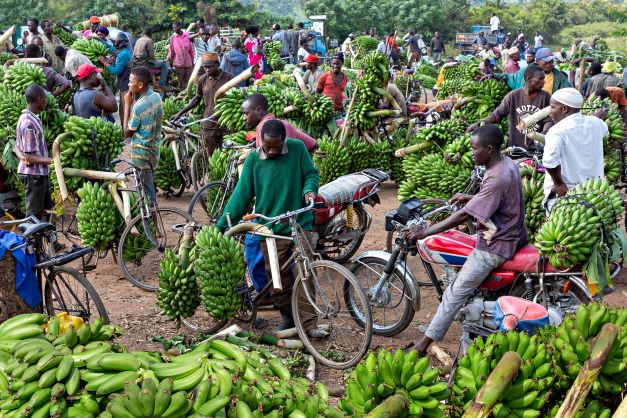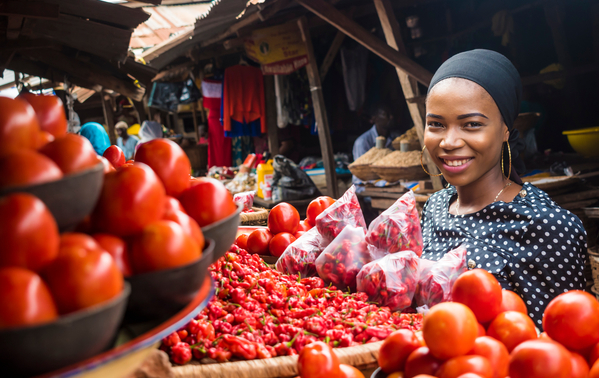The 50th anniversary of Earth Day (April 22) is falling in the midst of the global COVID-19 pandemic—a coincidence that should prompt reflection on where we are heading as a species. Earth Day was conceived to make environmental protection the world’s number one priority—at least for a day—and educate people about the environment’s crucial importance for humanity. Should COVID-19 overshadow the attention we pay to Earth Day? Absolutely not! If anything, the pandemic reminds us of the myriad ways the environment and human activities intertwine.
As we described in the 2019 Global Food Policy Report (GFPR), a range of environmental trends are causing rapid and sometimes irreversible losses of key ecosystem services and functions, including in agroecosystems—which in turn disrupt human social and economic activities. These trends include climate change, deforestation, land degradation and biodiversity loss, water pollution, groundwater mining, the growth of solid waste, and air pollution. These problems are compounded by growing inequities in access to natural resources and basic necessities such as water and food; by poor governance of natural resources; by a short-term focus on GDP-driven economic growth; and by under-investment in innovations that can reduce our negative footprint on the environment and address inequities.
In many countries of the Global South, the COVID-19 health crisis is unfolding in tandem with ongoing environmental crises. In East Africa, countries are now facing the dual challenge of controlling locust swarms and responding to the COVID-19 outbreak. While many countries declared states of emergency due to Covid-19, Viet Nam declared a state of emergency because of a devastating drought in the Mekong Delta, its largest rice producing area. And cities that have been battling air pollution, such as Delhi in India, might face a larger number of COVID-19 deaths. As international emergency response resources become overextended and the movement of people, materials, and equipment restricted, regions in need will struggle even more to address the underlying challenges they face.
Clearly, the temporary reductions in greenhouse gas emissions in China, India, and globally due to the sudden halt of economic activities from COVID-19 lockdowns are not the answer to our environmental challenges. Lockdowns are causing a great deal of human suffering, and any environmental gains will be reversed as soon as the restrictions are lifted.
Moreover, while news coverage about nature rebounding around the world is inspiring, the pandemic carries its own environmental risks, including the skyrocketing production and use of disposable medical supplies (such as masks and gloves), the disruption of the waste and recycling industry, and, in some places, the loosening of existing environmental protections.
But the tradeoffs between economic activity and the environment are not nearly as stark as many assume. We can preserve the environment over the long term through greater determination, innovation, and an improved recognition and understanding of the intrinsic connection between the environment and human well-being.
Three learning opportunities for Earth Day
Improved coordination of science for impact. The research community, including IFPRI and CGIAR, has been swiftly responding to the pandemic by pooling knowledge resources and providing initial analyses of the pandemic’s impacts and causes. Earth Day has paved the way on environmental education and overall attention on the environment; now we need to galvanize the momentum to link environmental degradation with the inter-linked challenges of chronic poverty and food insecurity to make much greater strides toward sustained human well-being.
Strength through collective action. How societies and communities respond to the pandemic reveals their capacities to coordinate individual actions for a desired collective outcome or collective good. Physical distancing, when enforced, has been shown to be effective in limiting the spread of infection in nearly all places where it has been implemented. Achieving a collective good is only possible, however, when all (or a critical mass) go along. We believe similar forms of collective action can be mobilized to conquer other global challenges, such as curbing climate change, redressing groundwater mining, reducing deforestation, halting soil erosion, and maintaining habitat for biodiversity while providing poor and food insecure rural inhabitants with a stronger, larger voice.
Continued environmental degradation will end humankind. The pandemic’s most straightforward message is that protecting natural systems is essential for food production and human health, and thus ultimately for the survival of our species. COVID-19 has made us more aware of the global food system’s vulnerabilities and the importance of a reliable food supply. Getting food from the farm gate to the dinner table may involve a short or very long supply chain, and all steps along the way need to function. COVID-19 is the cause of current bottlenecks in global supply chains, but climate shocks and other environmental crises, ranging from water pollution to pests and disease will likely cause future disruptions in the global food system. The current crisis provides an opportunity for decision-makers to fortify global food supply chains and make food systems more sustainable for future generations.
Protecting the environment also has direct benefits for human health. Evidence so far points to animal-to-human transmission as the source of the novel coronavirus. Zoonotic diseases develop and intensify as human and wildlife interactions increase, often due to habitat loss, climate change, and overall biodiversity loss. To protect natural systems, then, is to protect human health and long-term survival—via natural resources used in food production, and through prevention of disease.
These are trying times. But when people are determined and work together, they can produce collective goods and accelerate science and innovation, even under conditions of personal sacrifice. If there is anything good coming from the pandemic, it is that humans as a species have never been so united around one cause: Overcoming COVID-19. To truly win the fight against this disease and secure a more sustainable and equitable future, however, we need to broaden the efforts to link human health with environmental protection and consider all aspects of the environment— Earth Day is a perfect opportunity to educate on this linkage. Our long-term survival depends on acting upon it.
Wei Zhang and Ruth Meinzen-Dick are Senior Research Fellows with IFPRI’s Environment and Production Technology Division (EPTD); Elizabeth Bryan is an EPTD Senior Scientist; Claudia Ringler is EPTD Deputy Director and co-leader of the CGIAR Research Program on Water, Land and Ecosystems (WLE) Flagship Program on Variability, Risks and Competing Uses.
Read the original blog here



